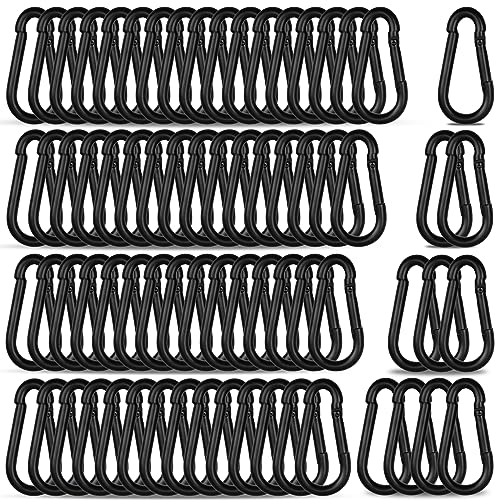

Select a reputable company that specializes in transporting goods across borders. Research reviews and ratings to ensure reliability and calculate the cost based on weight, dimensions, and destination.
Prioritize proper packaging to prevent damage during transit. Use sturdy boxes, protective materials like bubble wrap, and secure all items tightly. Label each box clearly with your contact information and destination details.
Understand the customs regulations of the destination country. Some items may require permits or be subject to restrictions. Prepare necessary documents, including a detailed inventory of contents, to avoid delays at customs checkpoints.
Consider insurance options offered by the shipping provider. This can safeguard against potential loss or damage during transit. Always keep receipts and tracking information handy for reference.
Plan ahead; shipping timelines can vary. Booking services well in advance can help ensure your belongings arrive on schedule. Stay informed on the chosen service’s estimated delivery times and any potential delays due to unforeseen circumstances.
How to Ship Your Bags Across Borders
Choose a reliable courier service like FedEx, DHL, or UPS, which specializes in parcel delivery. Compare rates and delivery times to find the best option for your needs.
Packaging Guidelines
Utilize sturdy boxes or suitcases for protection. Wrap fragile items in bubble wrap, and fill any empty spaces with packing peanuts or crumpled paper to prevent shifting during transit. Clearly label each package with your name, destination address, and contact information.
Customs Requirements
Research the customs regulations of both the sender and recipient countries. Prepare the necessary documentation, including customs declarations and invoices. Be aware of restricted or prohibited items to avoid delays or confiscation.
Choosing the Right Carrier for International Luggage Shipping
Prioritize carriers with a solid reputation and positive reviews to ensure reliable service. Explore options like:
- Major logistics companies: Renowned names often provide robust infrastructure and support.
- Specialized shipping services: These companies focus on baggage transport, offering tailored solutions for specific needs.
- Local courier services: Smaller, regional firms sometimes offer competitive rates and personalized service.
Check the following criteria before deciding:
- Pricing structure: Assess the fee schedule, including any hidden costs or surcharges.
- Transit times: Verify estimated delivery durations based on destination and service level.
- Insurance options: Investigate coverage for valuable items, which can mitigate potential loss or damage.
- Tracking capabilities: Real-time tracking features enhance peace of mind during transport.
- Customer service: Responsive support can make a significant difference in resolving issues swiftly.
Additionally, confirming the carrier’s ability to handle customs clearances and compliance with destination regulations can prevent unexpected delays. Prior research on each option will yield the best choice tailored to personal requirements.
Understanding Import Regulations and Customs Requirements
Compliance with import regulations is non-negotiable for smooth transit of belongings across borders. Each destination has specific rules that dictate what can enter the country and any taxes that may apply. Check the official customs website of the receiving nation for the latest details.
Common items that face restrictions include:
| Item Type | Common Restrictions |
|---|---|
| Food Products | May require permits or be entirely prohibited. |
| Medications | Prescriptions often need documentation; some drugs may be banned. |
| Electronics | May incur duties, check for specific regulations per device. |
| Artwork & Antiques | Provenance documentation often required; may need special permits. |
Ensure all personal items are declared accurately to avoid penalties. Fill out the necessary customs declaration forms provided by the carrier or relevant government agency. Incorrect or incomplete paperwork can lead to delays or additional fees.
Research the allowable value for duty-free exemptions to minimize costs. Be aware of restrictions on the total weight and dimensions of packages, as exceeding limits can result in additional charges or rejection of shipment.
Special considerations exist for items like strollers or travel gear. For example, high-quality options like the best unisex diaper backpack might pass through customs without issues if declared appropriately and within value criteria.
Planning ahead ensures a hassle-free experience. Keep all receipts accessible and be ready to provide proof of ownership if required. This preparation fosters a more straightforward customs process upon arrival.
Calculating Shipping Costs and Choosing the Best Option

To determine shipping expenses accurately, gather the weight and dimensions of the package. Most carriers provide online calculators where you can input this information along with the destination to estimate costs. This allows comparison among different service providers, ensuring the most suitable choice based on your budget.
Factors Influencing Shipping Costs
Several variables impact the final price, including distance, carrier choice, delivery speed, and package size. Selecting express options generally incurs higher fees, while slower services can offer significant savings. Additionally, specific carriers may have surcharges based on the type of contents, so checking their terms is advisable. Researching any promotional deals or discounts may also yield cost-effective solutions.
Best Practices for Cost-Effective Shipping
Consolidating items into fewer packages can minimize charges, as many carriers have price brackets based on weight thresholds. Considering a flat-rate option may also be beneficial if your shipments are heavy but compact. Lastly, review the potential impact of insurance on total costs; while it adds to the expense, it can safeguard against loss or damage.
Properly Packing Your Luggage for International Transport

Utilize sturdy and high-quality containers that can withstand handling during transit. Take time to select hard-shell cases or durable bags with reinforced stitching for added protection.
Begin with a solid organization strategy. Roll clothing items instead of folding them to maximize space and reduce wrinkles. Place heavier items at the bottom and lighter articles on top. Consider packing cubes for easy compartmentalization.
Incorporate cushioning materials, such as bubble wrap or clothing, around fragile items. Secure any essential documents, such as travel itineraries and identification, in a designated compartment for easy access.
Make sure to check for weight limits imposed by your chosen carrier. Overpacking can result in additional fees or complications during transport. Use a luggage scale to ensure compliance.
Label your containers with your name, destination address, and contact information. This step is crucial for proper identification, especially if misplaced.
Lastly, consider your pet’s needs if traveling with them. Pack their necessities, such as food, water, medications, and comfort items. Familiarize yourself with any regulations that apply to traveling with animals. For assistance in finding potential hazards, refer to resources like how to find a break in an invisible dog fence.
Tracking Your Shipment and Ensuring Delivery
Utilize a reliable tracking system provided by the chosen shipping company for real-time updates on your parcel’s location. Most carriers offer tracking numbers that can be entered on their websites or mobile apps, providing exact information about your package’s status throughout its journey.
Establish Communication

Ensure that you provide accurate contact details when arranging the shipment. This allows the carrier to reach you if there are delays or issues during transit. Setting up alerts via SMS or email can keep you informed about any changes in delivery schedules.
Verify Customs and Delivery Notifications
Monitor customs notifications closely. Delays can occur due to missing documentation or customs fees. By checking the carrier’s site or contacting customer service, you can resolve issues before they affect the delivery timeline. Always review the final delivery confirmation carefully to ensure the package arrives at the correct address.
If you’re traveling on a budget, consider checking the best luggage for travelers on a budget to help save costs on your next adventure.
Handling Lost or Damaged Luggage Claims
If your belongings are lost or damaged during transit, immediately contact the carrier to file a claim. Have relevant documentation ready, including receipts, tracking numbers, and detailed descriptions of the items affected.
For missing items, report the issue as soon as possible. Many companies have a deadline for reporting, usually within 24 to 72 hours after the scheduled arrival. Claim forms can often be submitted online or via email.
In cases of damage, take clear photographs of the affected items and keep all original packing materials. This evidence is crucial when submitting your claim. Ensure you retain copies of all communications with the carrier for your records.
Understand that compensation amounts vary based on the carrier’s policies and local laws. Some carriers adhere to the Montreal Convention, which may provide a limit on reimbursements, while others follow their own guidelines. Being informed about these details can assist in managing expectations.
If disputes arise, escalate the matter to customer service or a consumer protection agency in your region. Having a well-documented claim increases the chances of a favorable resolution.







